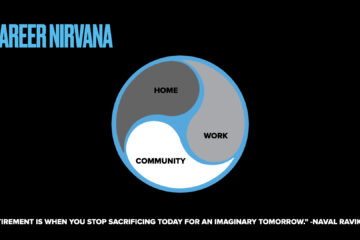Work and play are often seen as distinct and different, but the expectation of top talent has evolved. People crave a connection to enjoyable activities that deliver a sense of purpose and belonging. When work feels like play, the fun environment invites people to take on bigger challenges. To support the future of work, students, educational organizations, employees, and employers must adapt together.
Extra Shot
Welcome to your first taste of a new community-driven initiative that will feature special guests sharing occasional contributions. Interested in collaborating? Let’s chat!
When we think about work that feels like play, it’s not just pinball all day. The definition of “fun” is to spend time doing an enjoyable activity. When a team has fun with satisfying work that matters, the group’s true potential is unlocked and individuals are more likely to become indispensable. This leads to more generosity, laughter, caring, scientific questions, learning, gift-giving, and mapmakers eager to go beyond what’s expected.
A recent study identified 16 trends that are shaping the future of work. It found that, in addition to more flexibility and fair wages, employees want greater autonomy. Employees want the freedom to be creative and to find purpose in the way they spend their time. When this balance is achieved, people are happy and the sense of satisfaction allows them to do their best work. Along with more innovative productivity, this culture also leads to lasting retention.
As today’s workforce is transformed into tomorrow’s playforce, it’s important to consider the difference between work that feels like play, compared to work with playgrounds nearby. When fun activities only serve as a distraction, the facade of fun will wear off. It’s also good to remember that what’s fun for one person could be more of a chore for others. Personality assessments and ongoing interactivity will help you understand individuals and the part they play within the system. The better people know each other, the more inclined they’ll be to act themselves. Acting professionally shouldn’t mean dimming one’s personality. The more comfortable people feel at work, the better they’ll be able to focus on what’s important. Too often, attempts to optimize employees’ work-life balance stem from a flawed assumption that we must create boundaries to differentiate life and our work. Perhaps the opportunity and the future of work, is to create an experience where the two coexist as one?
Extra Shot
This caffeinated contribution was written by Elizabeth Tweedale. Elizabeth has (co)authored six books, exited an AI company called GoSpace, and is now the CEO of Cypher Coders, the UK’s leading coding school for children. She’s passionate about family, preparing kids for the future, and can be found in our Roasted Reflections group.
If the future of work is fun, we must guide children away from an outdated “workforce” and toward a “playforce” to activate creativity, productivity, satisfaction, involvement, and purpose. The world is their playground and no permission is needed to contribute. Education can be about delivering access to skills, tools, and community. When children are encouraged to connect, play games, be kind, and learn with passion, they engage not because they have to, but because they’re having fun. This empowers students and as they reach the playforce, they’ll understand the superpowers they’ve nurtured in their own areas of interest. Beyond the classroom, this translates into employees and employers who are more likely to enjoy their work when given the opportunity to do what they’re best at.
As we see/hear in the closing chapter of YDNTB, “life is too short not to enjoy your work.” Together, let’s change the equation to make work a lifestyle, which sets us free to have fun making a difference.
